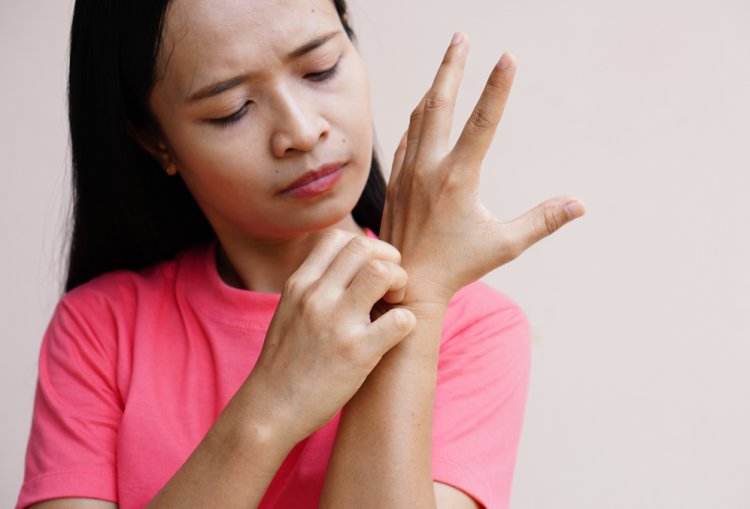Textile Contact Dermatitis: A Closer Look at Clothing-Related Skin Reactions
Textile contact dermatitis, commonly referred to as clothing dermatitis, is a type of allergic reaction or irritation that occurs when the skin comes into contact with certain fabrics or materials used in clothing. This condition can manifest as redness, itching, swelling, or even blistering in the areas where the clothing touches the skin. While clothing is intended to provide protection and comfort, for some individuals, it can trigger uncomfortable skin reactions due to various factors inherent in the textiles themselves. Understanding the causes, symptoms, and management of textile contact dermatitis is crucial for both affected individuals and healthcare professionals.

Causes:
Textile contact dermatitis can be caused by a variety of factors, including:
- Fabric Materials: Certain fabrics such as wool, synthetic fibers (e.g., polyester, nylon), and even some natural fibers (e.g., cotton) can contain chemical additives, dyes, or finishes that may irritate sensitive skin.
- Chemical Treatments: Textiles undergo various chemical treatments during manufacturing, including dyeing, bleaching, and finishing processes. Residual chemicals from these treatments can remain on the fabric and cause skin reactions.
- Formaldehyde: This chemical is commonly used in textile production to prevent wrinkling and shrinkage. However, some individuals may be sensitive or allergic to formaldehyde, leading to contact dermatitis.
- Dyes and Pigments: The dyes and pigments used to color fabrics can contain allergens or irritants that provoke skin reactions in susceptible individuals.
- Fabric Softeners and Laundry Detergents: Residual chemicals from fabric softeners and laundry detergents can remain on clothing even after washing, leading to skin irritation upon contact.
Symptoms:
The symptoms of textile contact dermatitis can vary depending on the individual's sensitivity and the specific fabric or chemical involved. Common symptoms include:
- Redness: The affected area of the skin may appear red or inflamed.
- Itching: Itching or a sensation of burning may occur, leading to discomfort.
- Swelling: Swelling of the skin may occur, particularly in severe cases or with prolonged exposure.
- Rash: A rash may develop, characterized by small bumps, blisters, or dry, scaly patches.
- Pain or Discomfort: The affected area may feel tender or painful, especially if the skin becomes broken or blistered.
Management and Prevention:
Managing textile contact dermatitis involves identifying and avoiding the triggers that cause the skin reaction. Here are some strategies:
- Choose Clothing Wisely: Opt for clothing made from natural, hypoallergenic fibers such as organic cotton, bamboo, or silk. Avoid fabrics known to cause irritation, such as wool or synthetic materials.
- Wash Clothing Before Wearing: Launder new clothing items before wearing them to remove any residual chemicals or dyes. Use fragrance-free and dye-free detergents.
- Avoid Fabric Softeners and Harsh Detergents: Choose gentle, hypoallergenic laundry products that are free from fragrances and harsh chemicals.
- Test for Sensitivity: If you suspect a particular fabric or clothing item is causing irritation, perform a patch test by wearing it on a small area of skin for a short period to see if any reaction occurs.
- Protective Clothing: For individuals with severe sensitivities, wearing a barrier garment made from a non-reactive material under clothing can help minimize direct contact with irritants.
In conclusion, textile contact dermatitis, or clothing dermatitis, can significantly impact an individual's quality of life by causing discomfort and skin irritation. By understanding the causes, symptoms, and management strategies outlined above, affected individuals can take proactive steps to prevent and mitigate reactions. Consulting with a dermatologist or allergist can provide further guidance and personalized recommendations for managing textile contact dermatitis effectively.
#TextileDermatitis #ClothingAllergies #SkinIrritation #FabricSensitivity #AllergicReactions #ClothingRash #DermatitisAwareness #SkinHealth #FabricAllergies #SensitiveSkin #HealthySkin #SkinCareTips #Dermatology #SkinConditions #AllergyAwareness #TextileAllergens #FabricChemicals #SkinProtection
Disclaimer:
The information provided in this article is for educational purposes only and should not be considered medical advice. If you have any health concerns or are experiencing symptoms, it is important to consult with a healthcare professional, such as a doctor or clinic, for proper diagnosis and treatment. Always seek the advice of your doctor or other qualified health provider with any questions you may have regarding a medical condition. Do not disregard professional medical advice or delay in seeking it because of something you have read in this article.
What's Your Reaction?





















